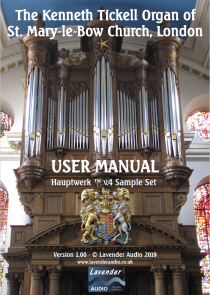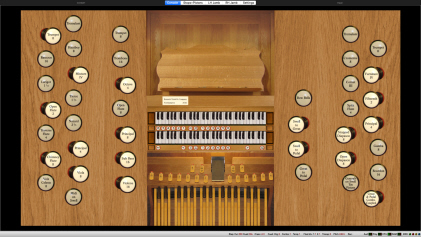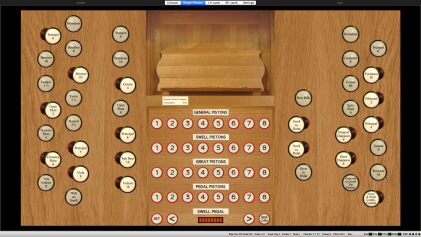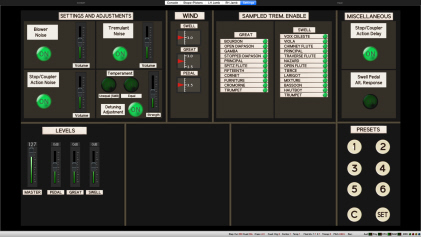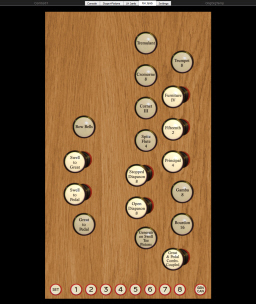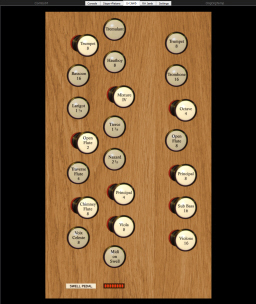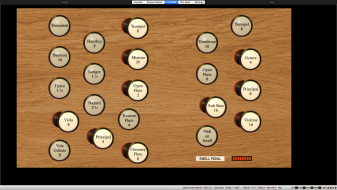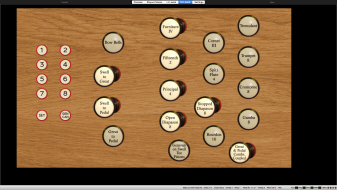
St Mary-le-Bow, London
Hauptwerk (v5 and upwards) Virtual Organ

© Lavender Audio 2008 -
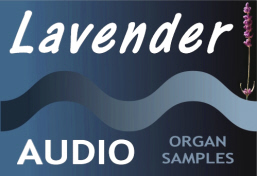
ST MARY-
Computer requirements vary depending on whether the single or multi-channel set is loaded. As Hauptwerk Lite Edition has no sample memory restriction, this would certainly be suitable for running the single-channel set, although the polyphony restriction of 1024 voices may be noticeable when using the multi-channel set. In addition, to take advantage of multiple stereo outputs and surround sound, the Advanced Edition would be necessary as Lite Edition only permits a single stereo output.
For the single channel set, a decent quad core processor is recommended, alongside a sensible minimum of 8 GB of system memory (RAM). The multi-channel complete set really does require 16 GB or more of system RAM, alongside an i5/i7/Mac M1+ multi-core processor; Hauptwerk Advanced edition would certainly be a strong recommendation.
The following table gives very approximate figures for the amount of RAM (memory) the organ samples require with various different loading options set. None of these figures take into account the RAM needed by the operating system or Hauptwerk itself. Where no figure is given, that particular loading option (although valid) hasn't been tested, generally because it wouldn't make sense to use it.
For the single channel set, a decent quad core processor is recommended, alongside a sensible minimum of 8 GB of system memory (RAM). The multi-
The following table gives very approximate figures for the amount of RAM (memory) the organ samples require with various different loading options set. None of these figures take into account the RAM needed by the operating system or Hauptwerk itself. Where no figure is given, that particular loading option (although valid) hasn't been tested, generally because it wouldn't make sense to use it.

Single channel
(x3 for multi-channel*)
(x3 for multi-
24 bit
20 bit
16 bit
16 bit (no tremmed ranks loaded)
14 bit (no tremmed ranks loaded)
Lossless
compression
compression
10,144 MB
8,954 MB
5,191 MB
2,817 MB
●
Single loops
and compression
and compression
●
7,938 MB
4,533 MB
2,462 MB
2,248 MB
* Multiplying by 3 will give an approximate figure. For instance, all three stereo channels loaded at 24 bit, all loops and lossless compression has been measured as requiring 30,013 MB of RAM. It is of course possible to load just two channels (eg Ambient and Surround only), in which case simply multiply these figures by 2
The following links give further information on the St Mary-le-Bow sample set ....
Main Console
Stops and Pistons
Settings (single channel set)
Left Hand Stop Jamb
Right Hand Stop Jamb
This sample set attempts to replicate the existing instrument at St Mary-le-Bow as closely as possible, with virtually no additions. The only exception to this is a provision of eight pistons for each division instead of the six found on the real thing. The extra pistons are omitted from the main Console screen, so as to give a more authentic visual experience. The Tickell organ does feature a Stepper - as Hauptwerk provides an excellent generic stepper, the use of this is assumed and the forward and backwards stepper buttons on the various displays have been integrated into the Hauptwerk stepper.
A comprehensive range of control options is available in the Settings screen for all organ definitions, allowing the overall balance of individual divisions and perspectives, with a six preset memory function provided for store and recall. In addition, flexible control of noise samples and other elements of organ control (such as stop delay and alternate Swell response) is included, along with the ability to choose between sampled or modelled tremulants. For further details on all of these features and much more, please see the user manual.
Various screen views have been programmed, which include pages optimised for those using two display monitors. Most of these views take advantage of Hauptwerk v4’s ability to create flexible screen layouts with differing aspect ratios, of particular benefit to those using screens in a portrait orientation. Please see below for a comprehensive selection of screenshots.
A comprehensive range of control options is available in the Settings screen for all organ definitions, allowing the overall balance of individual divisions and perspectives, with a six preset memory function provided for store and recall. In addition, flexible control of noise samples and other elements of organ control (such as stop delay and alternate Swell response) is included, along with the ability to choose between sampled or modelled tremulants. For further details on all of these features and much more, please see the user manual.
Various screen views have been programmed, which include pages optimised for those using two display monitors. Most of these views take advantage of Hauptwerk v4’s ability to create flexible screen layouts with differing aspect ratios, of particular benefit to those using screens in a portrait orientation. Please see below for a comprehensive selection of screenshots.

HAUPTWERK SPECIFICATION - ST. MARY-LE-BOW STANDARD
GREAT (C - a3)
Bourdon
Open Diapason
Gamba
Stopped Diapason
Principal
Spitz Flute
Fifteenth
Cornet (12.15.17)
Furniture (15.19.22.26)
Cromorne
Trumpet
Tremulant
Swell to Great
Bow Bells (Cimbelstern)
16
8
8
8
4
4
2
III
IV
8
8
SWELL (C - a3)
(enclosed)
Voix Celeste
Viola
Chimney Flute
Principal
Traverse Flute
Nazard
Open Flute
Tierce
Larigot
Mixture (15.19.22)
Bassoon
Hautboy
Trumpet
Tremulant
MIDI on Swell
Viola
Chimney Flute
Principal
Traverse Flute
Nazard
Open Flute
Tierce
Larigot
Mixture (15.19.22)
Bassoon
Hautboy
Trumpet
Tremulant
MIDI on Swell
8
8
8
4
4
2 2/3
2
1 3/5
1 1/3
III
16
8
8
PEDAL (C - f1)
Violone
Sub Bass
Principal
Open Flute
Octave
Trombone
Trumpet (Great)
Great to Pedal
Swell to Pedal
16
16
8
8
4
16
8
ACCESSORIES
Great and Pedal pistons coupled
Generals on Swell foot pistons
Generals on Swell foot pistons
Reversible pistons
Great to Pedal, Swell to Pedal, Swell to Great
Reversible foot pistons
Great to Pedal, Swell to Pedal
Great to Pedal, Swell to Pedal, Swell to Great
Reversible foot pistons
Great to Pedal, Swell to Pedal
Eight general pistons and general cancel
Eight foot pistons to the Pedal Organ
Eight pistons each to the Great and Swell Organs
Eight foot pistons to the Pedal Organ
Eight pistons each to the Great and Swell Organs
This comprehensive manual gives full details of installation, further information on system requirements, user interface and performance suggestions as well as some background to the creation of the sample set.





